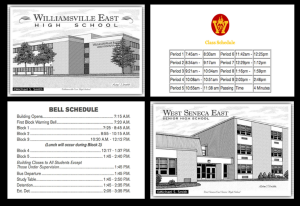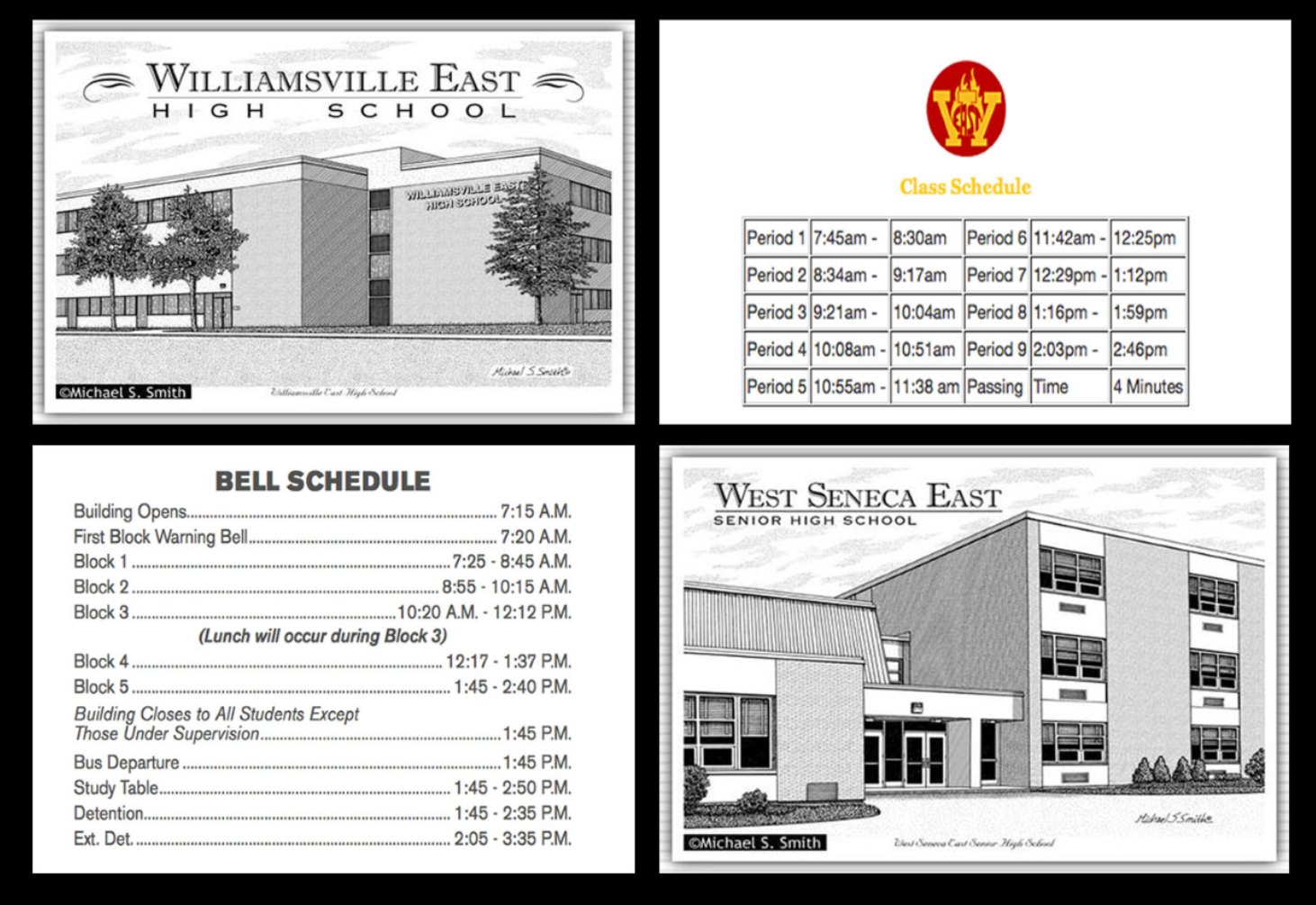 By: Steph Wetzel, Caroline Schnabel, Casey Vangelov, and Nicole Kacmierczak
By: Steph Wetzel, Caroline Schnabel, Casey Vangelov, and Nicole Kacmierczak
According to guidance counselor Mr. Weber, the average schedule for a student with an average workload is 6.5-7.5 credits per year with two frees. However, schedules can vary quite a bit, but overall it is no surprise that East students have very busy schedules, and that results in a heavy workload.
“Students are taking different courses at different levels, ranging from the minimum to AP courses. The average workload can vary a lot,” Mr. Weber said.
Most importantly, a student’s workload can determine their stress level. Between core classes and after school activities, students tend to feel overwhelmed. Time management is challenging when students are trying to balance their time between school work, sports and clubs, and friends and family.
West Seneca East is one of several schools in Western New York that uses blocks instead of periods. They have four classes each day for 80 minutes rather than having nine classes a day for 43 minutes. They see the same teachers every other day which gives them two days to complete their assignments for that class. This system of classes is called blocks.
Madison Leis, a current student at West Seneca East, enjoys having blocks. “I feel that block periods are nice because you don’t have the same classes or teachers every day. The way our school day is set up involves us getting out a little bit earlier. I have plenty of time to do things outside of school,” Leis said.
The quality of the student’s work and the amount of pressure they are under is determined by the amount of time they have. “I have plenty of time to complete assignments because I have a whole extra day to get things done, and since I don’t have the same class every day, weekend assignments usually get more time to be done. I’m usually never overwhelmed with anything,” Leis said.
Having blocks would cause a drastic change in our schedules. Although we would see each teacher for the same amount of time, the teacher’s schedule would be changed as well. West Seneca students have two days to complete their homework assignments and therefore are provided with more time to ask for help and time to do more activities outside of school. Some students would prefer not to be in the same class for 80 minutes, and would rather have 43 minutes classes every day. Teacher’s lesson plans would also be altered due to the extended amount of class time. They would be capable of fitting more material in, but would not be able to see the same students every day if necessary.
Mackenzie Mages is a current junior here at East. “I have a love-hate relationship with periods. Sometimes it feels like you’re rushing and don’t have enough time to let certain material sink in. The amount of time I have after school is dependent on how much homework I have to do for the next day, and if I have clubs or any extracurricular activities,” Mages said.
Block periods could lead students to procrastinate due to the amount of time they are given, or it could lead to them putting more of an effort towards it. Perhaps some students would find it less beneficial to spend more time in the same class each day. However, it appears that teachers benefit from the extension of time they are given. They are capable of providing students with more information. “Sometimes teachers don’t have enough time to go over things with you that you need to know for the next day. Most teachers then expect you to go home and learn the rest of the material on your own,” Mages said. “Some nights I’m not done with homework until 11-11:30 at night because I had other activities or appointments right after school. Sometimes I don’t finish my homework, so I’m stuck doing it in free the next day. The work isn’t like it would be if I had the time.”
Time management might also be improved if students were given something like a 30 minute break during the day. Due to the fact that some students do not have free periods, eight hours of classes plus homework and other activities can become overwhelming. Having a 30 minute break in the middle of the day has been discussed amongst teachers. Mr. Taylor has put the idea into consideration; however, he believes students would frown upon the idea because he would have to extend the school day to accommodate it. The school day would end at 3:15 rather than 2:46.
While it would be a benefit for students who don’t have a free period in the day, often it’s a student’s choice not to have a free period. “We take this into consideration by allowing students to eat during classes, even though this doesn’t always work out,” Mr. Taylor said. Teacher’s schedules would be changed as well, along with after school hours for sports and other activities. This is kept into consideration because of the amount of Board meetings this would require.
Social Studies teacher Mr. Wright said, “I’m a proponent at first of all saying, no student should have nine periods a day. We should have some sort of a thirty minute break. No one break would be the same. The school could be creative with its structure. It could be a quiet break in the library, or students could go to the gymnasium, or if it’s nice day, go outside. Even other schools, ninth period everyone is free, which would be a time for homework and to meet with teachers. It would serve as a way to reduce their stress.”
“I don’t know a lot about how they benefit over our type of schedule, but if there were studies showing a concrete difference and block schedules were better, then the schedules might be considered for change through the Board [of Education],” Principal Mr. Taylor said.










